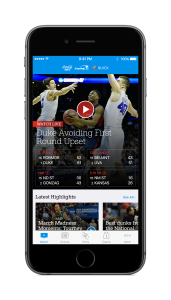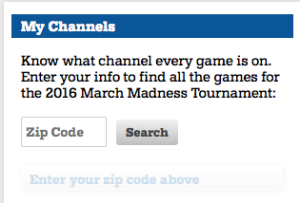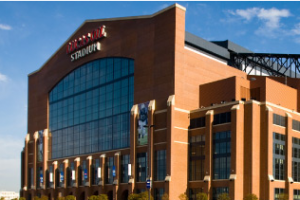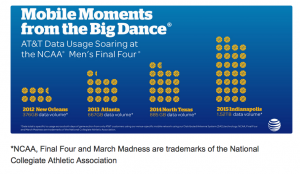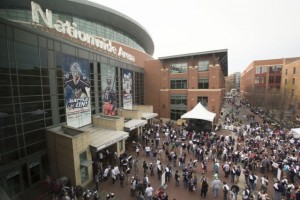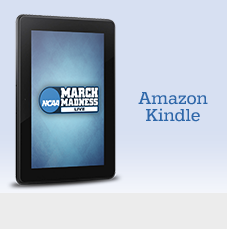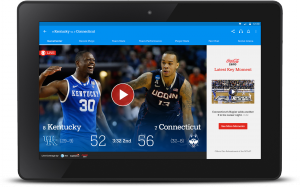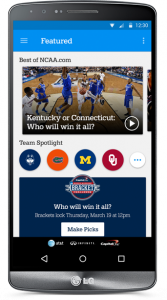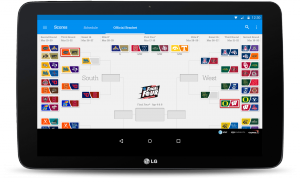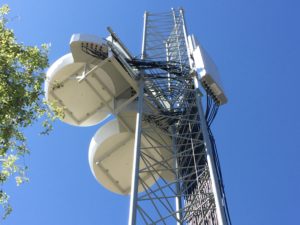
AT&T’s cell on wheels tower outside the University of Phoenix Stadium for the Final Four. Credit both photos: AT&T (click on any photo for a larger image)
While we don’t have full wireless-use totals from last year, totals of DAS and Wi-Fi from this year’s semifinal games from Saturday and Monday’s championship game (won by North Carolina, a 71-65 victory over Gonzaga) should surge past the last official mark we have, of almost 11 TB recorded at Lucas Oil Stadium in Indianapolis back in 2015.
That weekend saw 5.3 TB on the stadium’s Wi-Fi network and the rest on DAS systems; we are currently waiting for both the Wi-Fi numbers from UoP Stadium as well as any DAS stats from Verizon or Sprint (or T-Mobile, which wouldn’t give us a total usage number from the Super Bowl so we are guessing we won’t see any from Final Four weekend either).

AT&T COW in downtown Phoenix
AT&T said its temporary and fixed networks around Phoenix saw more than 10.5 TB of traffic over the weekend, a sign that cities with big-event venues probably need to start thinking of how they might need to beef up macro and small-cell networks around town — or help the carriers deploy towers and other devices more quickly so that fans can stay connected throughout their visits.
Our favorite tweet from Monday’s championship game was one where someone we follow had a picture of himself watching live baseball on his phone while at the UoP stadium during the championship game. While it may be a subtle comment on the painful play (and refereeing) it was certainly a vote in favor of the great connectivity in the building, whether it was on Wi-Fi or cellular. Stay tuned for more figures as we get ’em.
